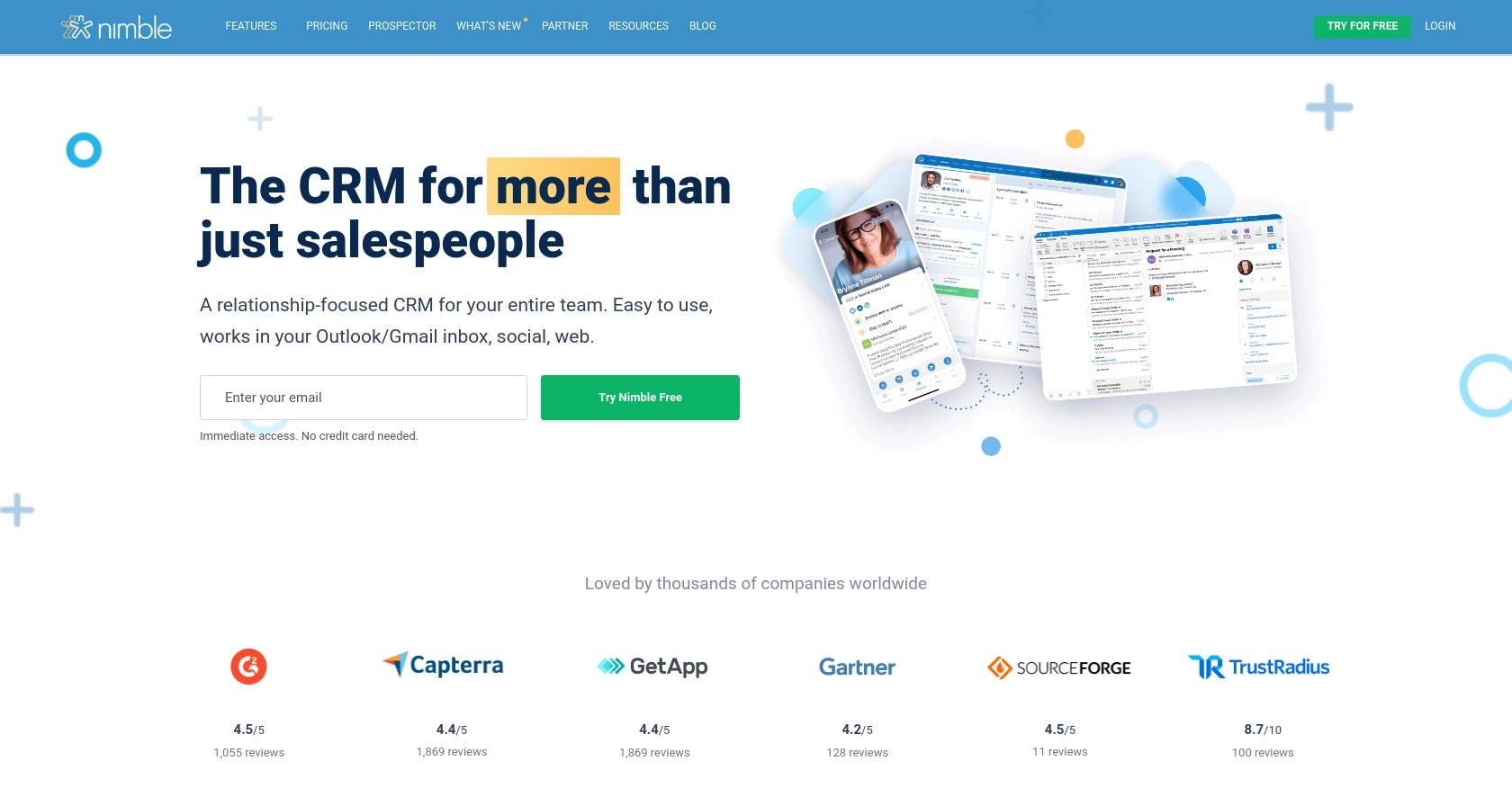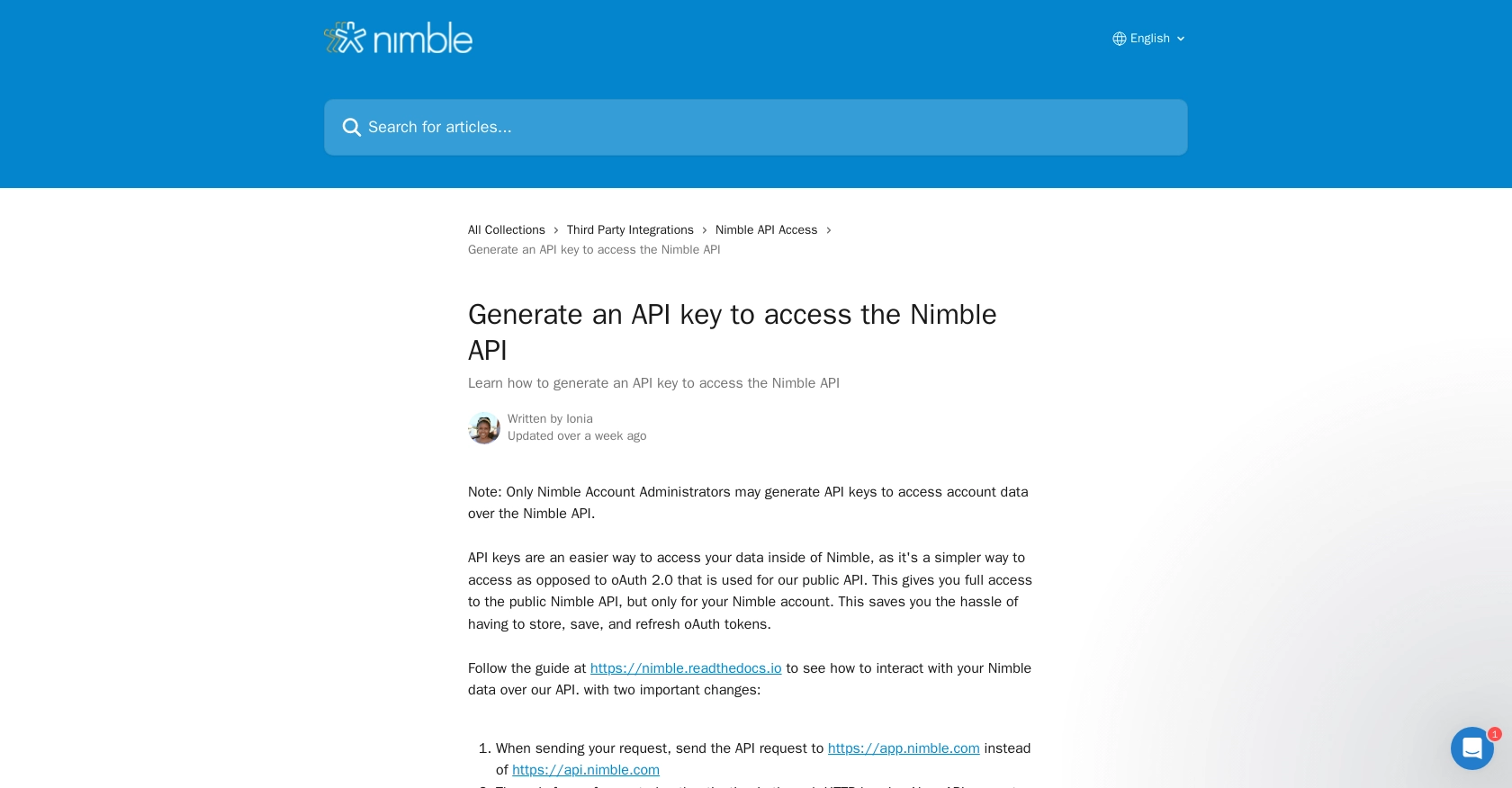Using the Nimble API to Get Companies (with Python examples)

Introduction to Nimble CRM API
Nimble is a relationship-focused CRM platform that helps businesses manage their contacts, communications, and sales processes. With its seamless integration capabilities, Nimble allows users to connect with Microsoft 365 and Google Workspace, making it a versatile tool for managing client interactions and nurturing relationships.
Developers may want to integrate with Nimble's API to automate and enhance their CRM functionalities. For example, using the Nimble API, a developer can retrieve company data to analyze business relationships or synchronize contact information across different platforms.
This article will guide you through using Python to interact with the Nimble API, specifically focusing on retrieving company information. By following this tutorial, you will learn how to efficiently access and manage company data within the Nimble platform.
Setting Up Your Nimble Test Account for API Integration
Before you can start interacting with the Nimble API, you'll need to set up a test account. This will allow you to safely experiment with API calls without affecting live data. Follow these steps to get started:
Create a Nimble Account
If you don't already have a Nimble account, you can sign up for a free trial on the Nimble website. This trial will give you access to the necessary features to test API integrations.
- Visit the Nimble website and click on "Start Free Trial."
- Fill out the required information to create your account.
- Once your account is set up, log in to access the Nimble dashboard.
Generate an API Key for Nimble API Access
Nimble uses API keys for authentication. Follow these steps to generate an API key:
- Navigate to the "Settings" section in your Nimble dashboard.
- Under "API Token," select "Generate New Token."
- Provide a description for your token and click "Generate."
- Copy the generated API key and store it securely, as you'll need it for API requests.
Note: Only Nimble Account Administrators can generate API keys. Ensure you have the necessary permissions.
Configure API Key Permissions
When generating your API key, you can set specific permissions to control access to different parts of your Nimble data:
- Ensure that the API key has the necessary scopes for accessing company data.
- Adjust permissions as needed to match your integration requirements.
Verify API Key Access
To ensure your API key is working correctly, you can test it with a simple API call:
import requests
apikey = "YOUR_API_KEY"
response = requests.get("https://app.nimble.com/api/v1/myself", headers={"Authorization": "Bearer " + apikey})
print(response.json())Replace YOUR_API_KEY with the API key you generated. This call should return information about your Nimble account, confirming that the API key is valid.
For more details on generating an API key, refer to the Nimble API documentation.

sbb-itb-96038d7
How to Make API Calls to Retrieve Company Data from Nimble Using Python
To interact with the Nimble API and retrieve company data, you'll need to set up your Python environment and make the necessary API calls. This section will guide you through the process, including setting up Python, installing dependencies, and executing the API call to fetch company information.
Setting Up Your Python Environment for Nimble API Integration
Before making API calls, ensure you have the following prerequisites installed on your machine:
- Python 3.11.1 or later
- The Python package installer, pip
Once you have these installed, open your terminal or command prompt and install the requests library, which is essential for making HTTP requests:
pip install requestsExecuting the API Call to Fetch Company Information from Nimble
With your environment set up, you can now proceed to make an API call to retrieve company data. Follow these steps:
import requests
# Set your API key
apikey = "YOUR_API_KEY"
# Define the API endpoint for retrieving company data
endpoint = "https://app.nimble.com/api/v1/companies"
# Set the request headers with your API key
headers = {"Authorization": "Bearer " + apikey}
# Make a GET request to the API
response = requests.get(endpoint, headers=headers)
# Check if the request was successful
if response.status_code == 200:
# Parse and print the JSON data from the response
companies = response.json()
print(companies)
else:
print("Failed to retrieve company data:", response.status_code)Replace YOUR_API_KEY with the API key you generated earlier. This code snippet makes a GET request to the Nimble API to fetch company data. If successful, it will print the retrieved data in JSON format.
Handling Errors and Verifying API Call Success
It's important to handle potential errors when making API calls. The Nimble API may return various HTTP status codes indicating the result of your request:
- 200 OK: The request was successful, and the company data is returned.
- 401 Unauthorized: The API key is invalid or missing. Ensure your API key is correct.
- 500 Internal Server Error: An error occurred on the server. Try again later.
Always check the status code of your response to ensure the request was successful. You can verify the retrieved data by comparing it with the data in your Nimble test account.
For more information on handling errors, refer to the Nimble API documentation.
Conclusion and Best Practices for Nimble API Integration
Integrating with the Nimble API allows developers to streamline CRM processes by automating data retrieval and synchronization. By following the steps outlined in this guide, you can efficiently access and manage company data within the Nimble platform using Python.
Best Practices for Secure and Efficient Nimble API Usage
- Secure API Key Storage: Always store your API keys securely, using environment variables or a secure vault, to prevent unauthorized access.
- Handle Rate Limiting: Be mindful of the API rate limits to avoid throttling. Implement retry logic with exponential backoff to handle rate limit responses gracefully.
- Data Transformation: Standardize and transform data fields as needed to ensure consistency across different platforms and integrations.
Enhancing Your Integration with Endgrate
While integrating with Nimble's API can be straightforward, managing multiple integrations can become complex. Endgrate offers a unified API solution that simplifies integration management across various platforms, including Nimble.
By leveraging Endgrate, you can save time and resources, allowing your team to focus on core product development while providing an intuitive integration experience for your customers. Explore how Endgrate can streamline your integration processes by visiting Endgrate.
Read More
Ready to get started?
